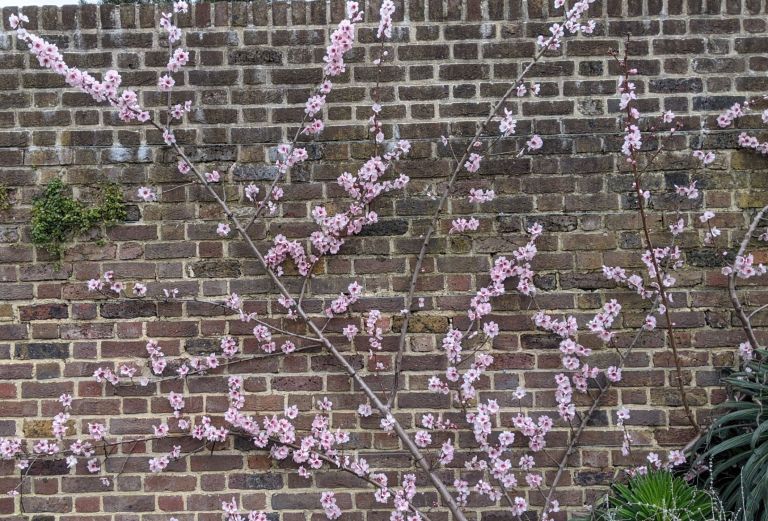
by Matt Weston, garden apprentice
March brings the end of winter and there is a lot to see already in flower in the walled garden. Amongst a colourful cascade of blossoming cherries, plums, flowering daffodils and hyacinths, there is no equal to our walled-trained almond in terms of bold colourful blooms.
Being up against a south facing wall gives the plant added warmth but it is worth noting that it is hardy to -15°C so should survive the harshest British winters, even in more exposed sites! Almonds are generally grown in hotter climates and are said to have originated in western Asia, spreading eastwards through trade along the silk road. They are recorded as growing in Britain as early as the 16th century and grow well in the southeast, making them a worthy tree for a London garden to this day.

Prunus × persicoides ‘Ingrid’ is self-fertile and highly rated for its excellent fruit. Yes, fruit! It might surprise some but an almond is actually a fruit. They are a drupe or stone fruit and just like other fruit from the genus Prunus like cherries, plums, peaches and apricots, they have skin (exocarp), a fleshy outer tissue (mesocarp), and a woody stone or pit (endocarp). The almonds we buy in the supermarket next to other non-nuts nuts like peanuts (which grow underground and are classified as legumes like lentils) or cashews (technically the seed of a cashew apple) are in fact the dried embryos that have been removed from stone of the fruit and dried.
So next time you’re enjoying some delicious almond-based baked goods, an almond-milk latte or plain almonds, remember the fragrant pink blossoms in our walled garden as the beauty which proceeded the fruit!